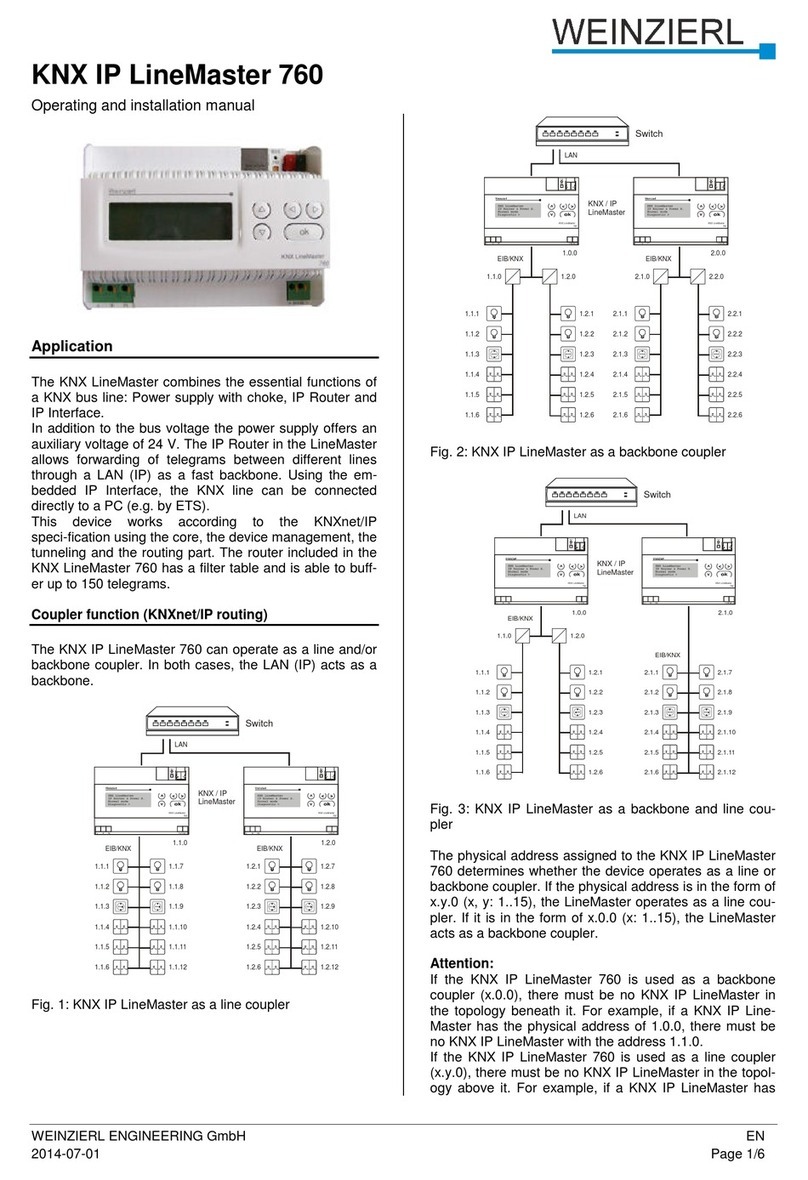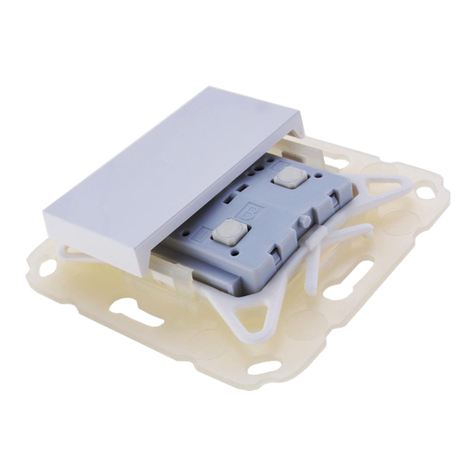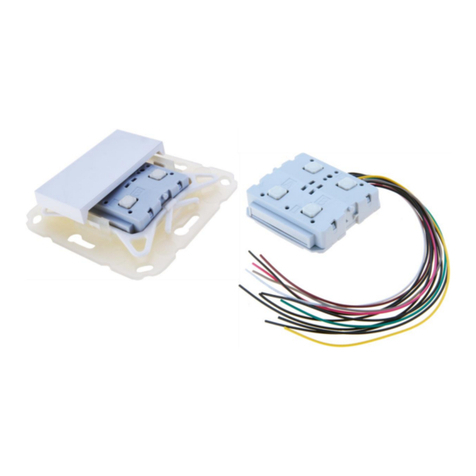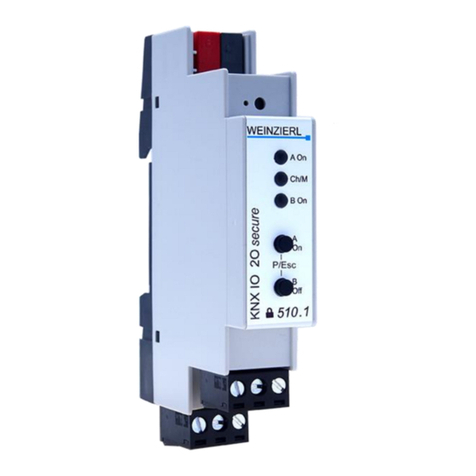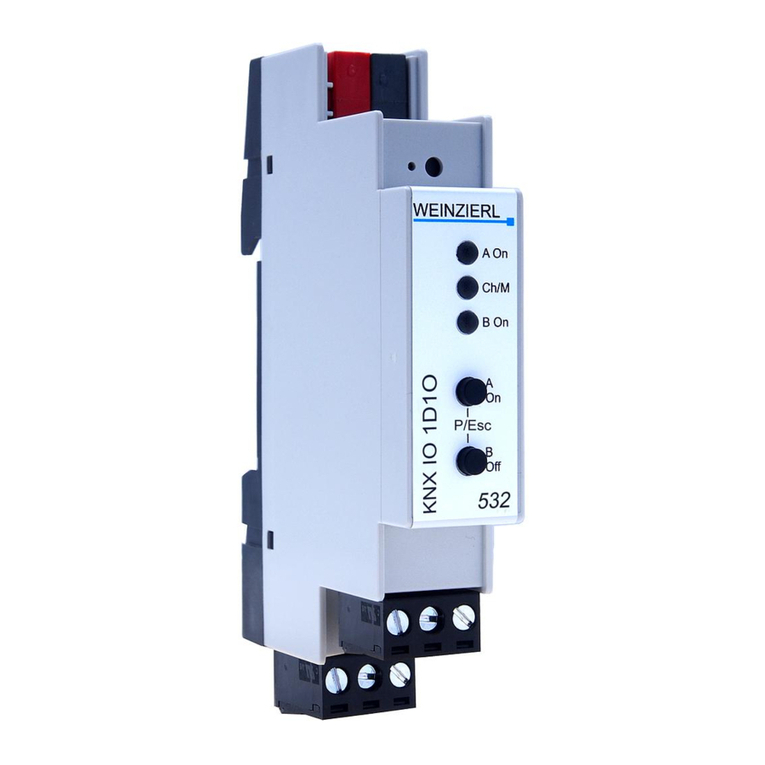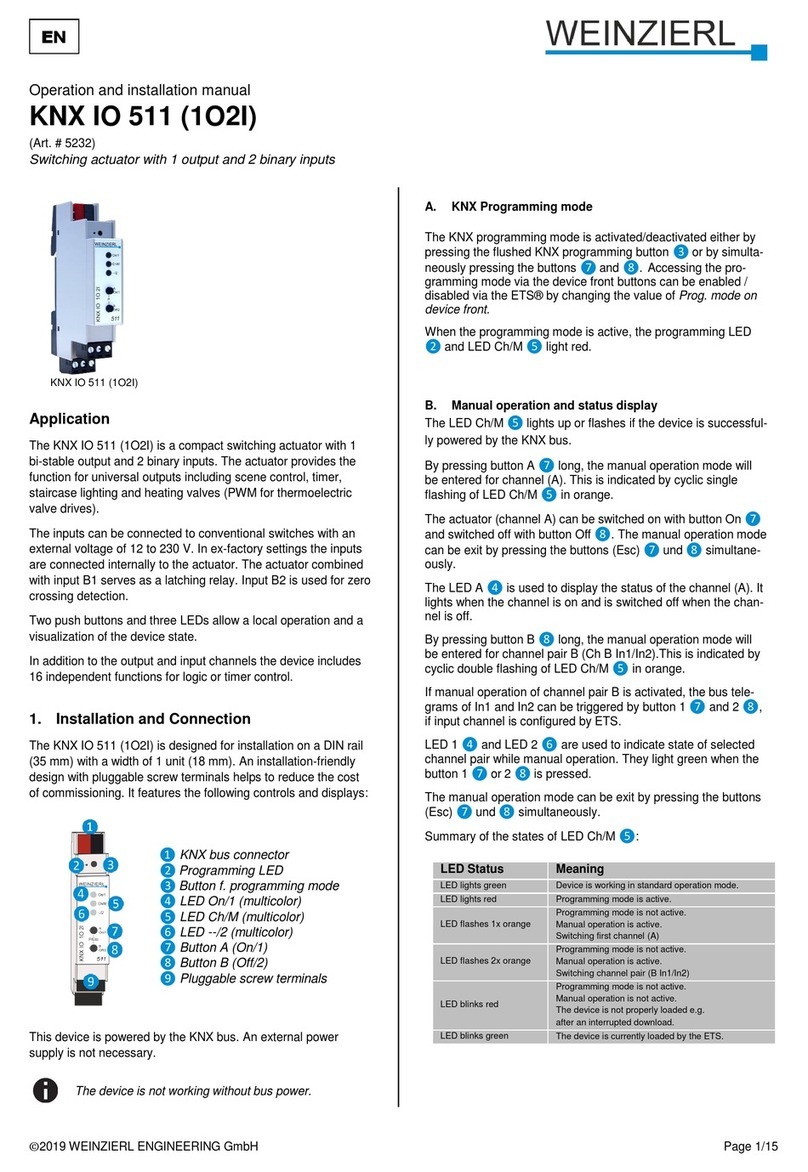
©2019 WEINZIERL ENGINEERING GmbH Page 5/41
dividual colors, of color value, saturation and bright-
ness, as well as for controlling the dimmer via RGB
value.
- Staircase function
The parameter page "RGB A: Staircase function" is
displayed. Only the lock function is available here.
Send state
This parameter defines the behavior of the state objects:
- Disabled
State objects are deactivated and not displayed.
- Only on read
State objects send only on request.
- On change
State objects send on value change.
- Cyclic and on change
State objects send cyclically and on value change.
Time for cyclic state
With this parameter, the cycle time can be set, when “Cyclic and
on change“ is selected for sending state.
State objects for on/off/RGB color (3 byte)
Activates the following state objects:
GO 31 RGB A: RGB output - State on/off
GO 32 RGB A: RGB output - State color
If sending on value change is activated and all 3 colors change
to value 0, the state object On/Off sends an OFF telegram, if at
least one of the 3 colors changes to a value greater than 0, the
object sends an ON telegram.
If sending on value change is activated and at least one of the 3
colors changes, the state object color sends new RGB values
with a time interval of at least 1 second.
State objects for single colors
Activates the following state objects:
GO 33 RGB A: Red output - State value
GO 34 RGB A: Green output - State
value
GO 35 RGB A: Blue output - State value
In RGBW configuration the following object is also available:
GO 36 RGB A: White output - State
value
If sending on value change is activated, the state objects trans-
mit with a time interval of at least 1 second if the color assigned
to the object has changed by at least 1% or if a dimming process
has been completed.
State objects for HSV
Activates the following state objects:
GO 37 RGB A: HSV color angle - State
angle
GO 38 RGB A: HSV saturation - State
value
GO 39 RGB A: HSV brightness - State
value
If sending on value change is activated, the state objects trans-
mit with a time interval of at least 1 second if the color attribute
assigned to the object has changed by at least 1% or if a dim-
ming process has been completed.
Behavior on bus power failure
The behavior of the output in the event of bus power failure can
be configured here.
The following options are selectable:
- No reaction
- Switch to color
A parameter for adjusting the color appears.
Behavior after bus power return
Here the behavior of the output after bus power return can be
configured. This behavior will be set after every device restart
(e.g. also on restart after ETS download).
The following options are selectable:
- No reaction
- Switch to color
A parameter for adjusting the color appears.
- State like before bus power failure
Adjustment of RGB LEDs with white
This parameter is only visible when the device is used in RGBW
configuration. With this parameter it can be switched whether the
output values for red, green and blue should be scaled depend-
ing on the current value of white:
- No influence
White has no influence on RGB, e.g. with an RGB
color value of white (#FFFFFF) all 4 outputs are set to
maximum.
- Darken when white becomes brighter
In this setting the output values of red, green and blue
are scaled with the formula 1 - white value, e.g. with
an RGB color value of white (#FFFFFF) the outputs of
red, green and blue are at minimum, the output of
white at maximum.
Object RGB combined (3 Byte)
Enables the function block for controlling the dimmer via the fol-
lowing object:
GO 11 RGB A: RGB - Set value
To set the fade time, the following parameter becomes also visi-
ble:
Fade time on changing color
The period is related to a complete dimming process of 0-100%.
Objects colors separate
Enables the function blocks for controlling the 3 single colors
red, green and blue. For each color, a parameter block is dis-
played, which is explained in section B.
Objects color/saturation/brightness
Enables the function blocks for controlling the dimmer via the 3
attributes color, saturation and brightness. For each attributes, a
parameter block is displayed, which is explained in sections C, D
and E.
Scene function
The scene function can be activated or deactivated here; it is
only available in the "Dimmer" operating mode. If this function is
activated, the parameter page "RGB A: Scene function" appears
for further configuration of scenes 1-16. The further functionality
is explained in section H.
